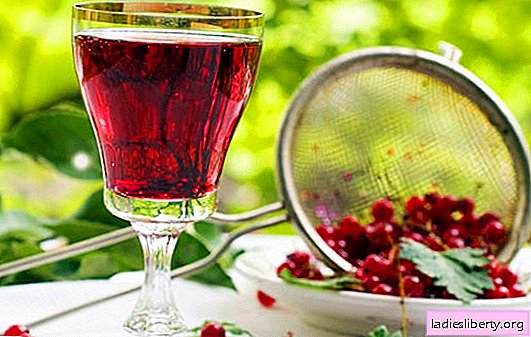
Surely everyone knows such a berry as a blackberry. Outwardly very similar to raspberries, only black in color, it grows on the edges of forests, on the steep banks of rivers, lakes and ponds. Its berries are very tasty, juicy, well tolerate transportation and are a proven means of cancer prevention.
Selection of seedlings for planting blackberries in the fall and varieties
When you choose plants for planting, you need to be sure of the variety that you are buying it. Therefore, “car sales” near roads and gardening partnerships should be avoided.
On the contrary, you should trust sales at agricultural fairs and exhibitions, where many specialized nurseries offer their products to gardeners. Finally, if you have enough free time, you can drive to the nursery yourself and buy seedlings directly from the plot. For all blackberry plants sold, the seller must have a varietal certificate, which you should not be shy to ask for.
Blackberry varieties can be divided into two groups - bush and semi-spreading.
Bush blackberry unpretentious, tolerates frosts well, has stems up to two meters long, often curved in the form of arcs or rings, there are curved thorns on the stems.
Semi-spreading varieties have stems up to four meters long without spikes; when growing it, it is advisable to fix the stems on trellises for ease of collection and care. Almost all blackberry varieties are of American origin; this berry is extremely popular there.
With good care, it is able to produce about 25-30 kilograms of berries from one large semi-spreading bush or about 20 kilograms from one ordinary. Due to the difference in climate, half-growing varieties of blackberries must be removed from the trellis for winter and bent to the ground so that they do not freeze.
Ordinary bush varieties tolerate wintering quite well without shelter.
As a varietal material, when planting a blackberry in autumn, it is best to choose plants in pots. With this planting, we have a plant with an intact root system, which is likely to have time to take root in a new place before the onset of cold weather. Saplings with roots without earth, without pots, root a little worse. Finally, all kinds of root branches and cuttings with the rudiments of the root system, if you find them on sale, it is best to plant them in the spring, so that they can take root in a new place.
Potted plant:

A plant carefully removed from the pot before planting:

The choice of place and location of plants
It doesn’t matter if you plant blackberries in the fall or spring, the place always has a big influence on the growth of the plant. Blackberries are very responsive to watering. Therefore, it is better to choose a place for it not far from a pond, water tap or tank, from where you get water for irrigation. However, it does not tolerate wetlands. For its growth, it is necessary to provide good drainage if the water is too high. By type of soil, blackberries prefer rather heavy clay and loamy soils that hold water well enough even in hot summers.
When planting, it is worth considering that the blackberry bushes are quite large. The distance between the half-growing bushes should be at least three meters, between ordinary bushes - at least two. Given the trellis principle of bush formation, you can plant blackberries in rows, in a row the distance between the bushes is three to four meters, between the rows of trellis - two meters. So it will be more convenient to pick berries, and it will be easier to care for.
Blackberries are shrubs that have stems, each of which bears fruit in a year. At first, the stem grows, the next year it bears fruit, after that it dies. Therefore, it is convenient to make double-row trellises - to tilt stems that began to grow this year, next year they will begin to bear fruit, and on the other there will be stems that already bear fruit, and then you need to carefully cut off the dying and drying ones.
Blackberry planting technology in the fall
If you chose seedlings in pots as a seedling, planting a blackberry will be the easiest. Before planting a blackberry in the fall, the plant must be removed from the pot, if plastic, paper or similar pots are used. If the pot is made of organic material, which decays after a couple of months, then you do not need to remove it. A hole is made according to the size of the root system of the seedling - approximately 10 cm deeper than the root system. A humus layer of 10-12 cm is poured into the hole.
Then the plant is placed there. Hold it with one hand, carefully cover with humus all the voids between the roots and the edges of the fossa. After this, add a little humus on top, water the plant to ram all the voids in the depth of the pit with water, and mulch around the seedling with peat about 10 cm thick. It is advisable to add potassium fertilizers to the water for irrigation, if necessary, water it once a week before the start frosts.
If you plant a plant with open roots, you must carefully take care of their safety. The blackberry has a fibrous root system. When planting, form a small mound at the bottom of the humus fossa. Place a plant on it so that its stem starts at about ground level. Sprinkle little by little with earth and humus roots, slightly compacting the earth with your palm. After planting, water and mulch as in the previous case.
The technology of reproduction of adult blackberry plants in the fall for planting
If you already have blackberries on the garden plot and you would like to get seedlings, autumn is the best time for this.
The easiest way to propagate blackberry plants is layering.
To do this, select the stems that have grown this year.
It is advisable to make layering no later than the beginning of October. The blackberry stalk is bent to the ground, fixed with a flyer-pin made of wire and sprinkled with earth.
During the wintering season, the stem will begin to take root, in the spring and summer it can already be cut off by secateurs from the mother stem, and next fall - gently remove from the ground along with the roots and plant in a new place.
Do I need to cover blackberry plants after autumn planting?
As practice shows, the thickness of the snow cover during a snowy winter in a summer cottage is more than 60-70 cm. This is more than enough to completely cover the stems of a blackberry planted in autumn. Considering that under the weight of the snow cover, the plant’s stalk will bend to the ground, near which the temperature usually does not fall below -1ºC even in severe cold, it becomes obvious that young plants do not need to be covered after planting.
If you still doubt that the winter will be snowy enough, you can pre-bend the plants to the ground and sprinkle with a layer of light peat.
It is better to do this in late autumn just before the frost, so that the plant does not begin to take root along the entire length of the stem.
In the spring, of course, this stem must be freed.
Adult plants, especially semi-spreading varieties, which farthest from breeding from their forest counterparts, carry the wintering much worse. They must be removed from the trellis and bent to the ground with the help of wire pins and twine. In this case, it is advisable to keep the stems that have already been thawed this year and one-year-old stems separately, so that later they can be placed in different rows of trellises. The height of the stems should be such that the snow covers them completely. During the first snowfalls, it is advisable to go to the summer cottage and remove snow on top of them.
Ordinary blackberry shrubs do not need additional shelter and can winter without preparation.











